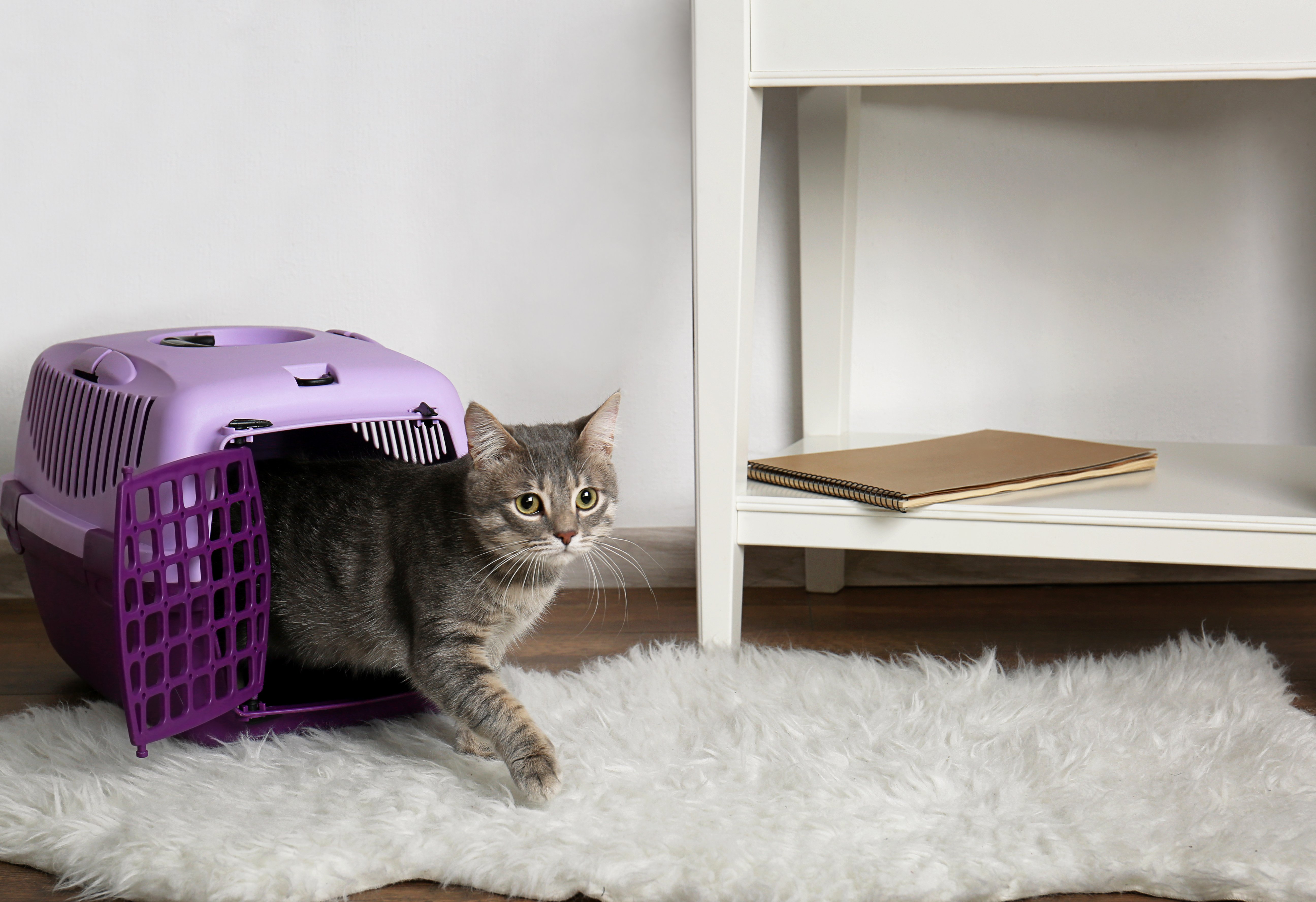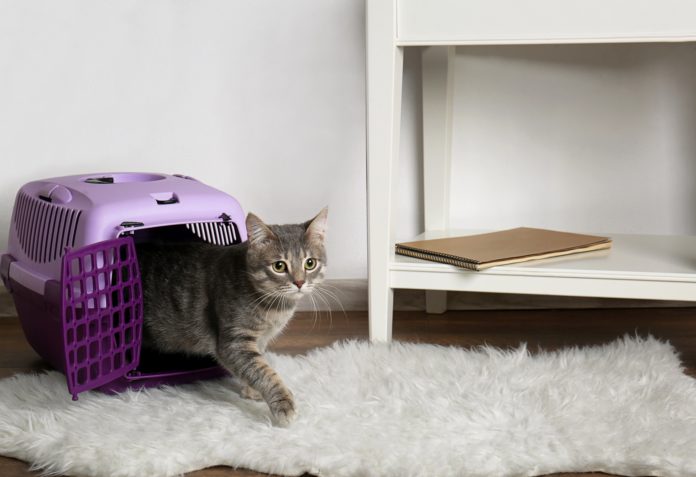
Cat carriers are the safest way to transport your cat, be it to a veterinary appointment or to visit family for the holidays. They keep your cat secure, so that she can’t get into trouble in an unfamiliar environment or be harmed in any way. In the case of a car crash, being in a carrier could save your cat’s life. But there is one challenge to this wonderful tool: getting your cat inside it.
Plan Ahead. Teaching your cat to like his carrier should start as soon as you bring him home, so that you can proceed gradually. “What you should do is feed the cat in the cat carrier,” says Katherine Houpt, VMD, PhD, DACVB, Cornell professor emeritus. This makes carrier entry part of your daily routine and associates the carrier with something positive (food!). Leave the carrier open so your cat can go in and out as he pleases.
If your cat is afraid of the carrier at first, you can start by putting his food next to the carrier, then moving it just inside the door after a few days, working up to putting the bowl all the way in the back of the carrier.
Once your cat is comfortable going into the carrier at mealtimes, start closing the door while he eats and then releasing him after a minute or two or after he is finished. This can be helpful if you have multiple cats on different diets or if one cat steals another’s food.
Most cats like having places to hide, and will go inside the carrier if it is left open in a favorite spot around the house. The carrier should not be kept in a garage or other storage place, because it will smell unfamiliar to your cat. He will be much more amenable to going inside a carrier that is clean, smells like home, and is associated with his meals than one that smells like mothballs.
You can also use toys and treats to get your cat to go into the carrier outside of mealtimes. When playing with your cat, toss his toy into the carrier so he has to go inside to retrieve it, then continue the game. If you have done any clicker training with your cat, you can use that method to teach him to go in the carrier, too.
Loading Time. On the day that you need to get your cat in her carrier and take her somewhere, go about your routine as usual but keep the carrier shut once she is inside. If she is going to the veterinarian and has to be fasted, use a toy to lure her inside the carrier instead of food (if you feed canned food, you can crack open a can to make her think it’s breakfast time, just don’t give her any until after the appointment).
For stressful times, like moving, you can put some Feliway in the carrier to help calm your cat. Dr. Houpt advises spraying the Feliway into the carrier 10 or 15 minutes before you load your cat or else the scent of the alcohol solvent will be too strong in the confined space.
If your cat doesn’t go into the carrier on her own, be patient and calm. Hold her close to the carrier and coax her in with treats or toys, or take the top off the carrier, if possible, so that you can place her inside gently.
No matter what, “Don’t stuff!” says Dr. Houpt. Stuffing your cat into the narrow carrier door might work in the short term, but your cat will be stressed and will probably fight you the next time you try to get her into the carrier.




